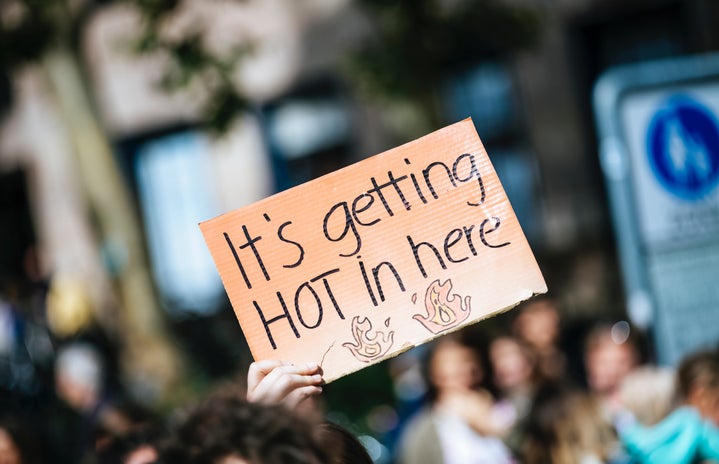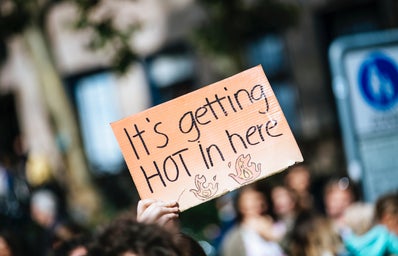By Angelica Niedermeyer
It’s giving– November summer. 74 degrees and sunny and I can’t even wear a sweater with my jean skirt because the walk to campus will make me swelter. It’s the second week of November, and the leaves on the maple trees that would have usually all fallen outside my apartment are staying put. They are still green and hanging on. And so is the heat…
The recent and rising heat waves each year are in correlation with climate change. According to this article from the Center for Climate and Energy Solutions, if greenhouse gas emissions do not stop, daily high and low temperatures will increase by at least 5 degrees Fahrenheit in most areas by mid-century, rising to 10 degrees Fahrenheit by late century.
What can we do to reduce the risks of climate change?
- Throwing away water bottles with water still in them is a big no. It is important to limit waste of water, by using old cups or plastic bottles to water plants. Another option is consciously taking shorter showers.
- There might be so many clothes in your closet and you just want to buy more to keep up with the trends. Instead, thrift clothes and share them with friends. Do not buy from fast fashion websites, like Shein, which overwork and underpay their workers while wasting an immense amount of water and fabric to keep up with demands.
- Travel less. Even though taking ubers is convenient, taking public transportation like trains, buses and carpooling reduce emissions. Another idea is to go for a walk with a group of friends to enjoy outside.
- Eat less meat and learn where your food comes from. Factory farming, especially red meat, increases greenhouse gas emissions and toxins to our environment. Another option is to eat green and sustainable food like vegan or vegetarian.
- Recycle and focus on creating less waste. By buying less, freezing or saving food and reducing your carbon footprint, you can save money and help the environment.


